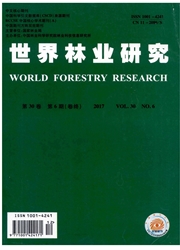

 中文摘要:
中文摘要:
能源燃烧释放的C02已被认为是温室效应的最直接原因,但森林生态系统的储碳效应在很大程度上延缓了C02直接排放于大气的过程,因而考虑两者之间的内在联系更加有利于实现能源可持续消费。文中利用能源生态足迹方法,以2007年市场一般均衡状态下的真实能源中间投入与商品进出口数据为基础,估算各部门中间投入能源足迹以及最终商品消费内含能源足迹,全面地核算当年我国的能源生态足迹,并且估算当年的森林生态系统碳汇功能承载力,从而为判断我国能源消费是否具有可持续性提供依据。结果显示:2007年我国能源生态足迹远远大于森林生态系统的碳汇功能承载力;从静态角度分析,我国当年的能源消费不具有可持续性;随着能源消费量增加,能源生态足迹将进一步扩大,而森林生态系统的碳汇功能承载力基本保持不变甚至有小幅下降。因此,降低能源碳排放将是中国实现能源可持续消费的关键目标。
 英文摘要:
英文摘要:
CO2 from energy combustion is deemed as the most contributors for greenhouse effect, while carbon sequestration of forest ecosystem greatly deterred the process of emission, and thus the internal connection should be considered to realize the sustainable consumption of energy. With energy ecological footprint method (EEF), the paper used intermediate energy input data between sectors as well as imports and exports data from computable general equilibrium of 2007 social accounting matrix to calculate the EEF of China and estimate carbon bearing capacity of forest ecosystem at that year, the result of which was employed to judge the sustainability of energy consumption in China. The results indicated that the EEF in 2007 was greatly larger than carbon bearing capacity of forest ecosystem. It suggested that in 2007, energy consumption in China was unsustainable, and however it was only limited to a static analysis. With the increasing consumption of energy, EEF is to be larger, but carbon bearing capacity of forest ecosystem will keep at the present level or even decrease. Therefore, reducing carbon sequestration from energy combustion will be the key to realizing sustainable energy consumption in China.
 同期刊论文项目
同期刊论文项目
 同项目期刊论文
同项目期刊论文
 期刊信息
期刊信息
